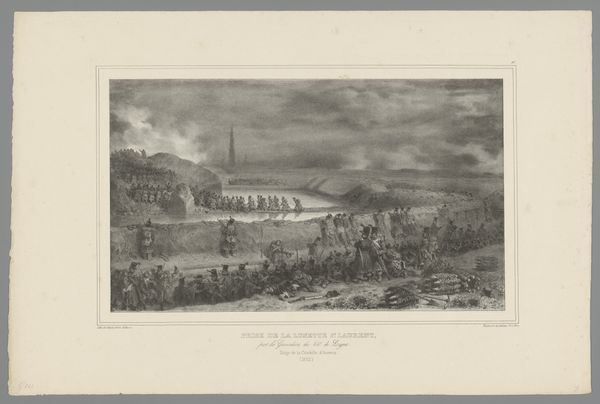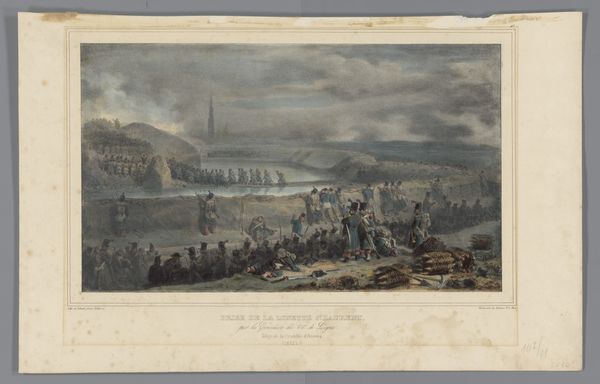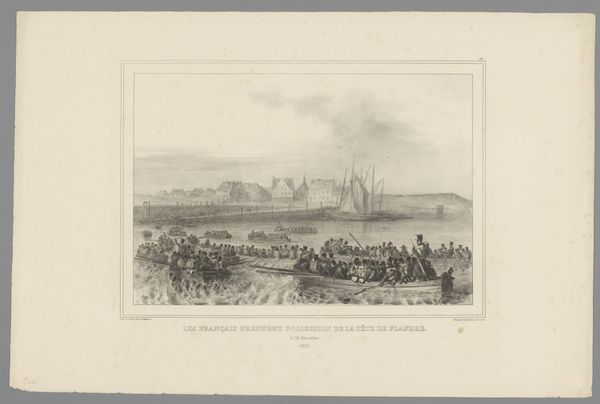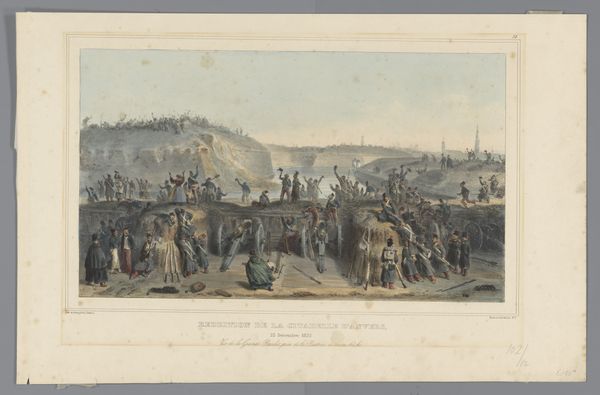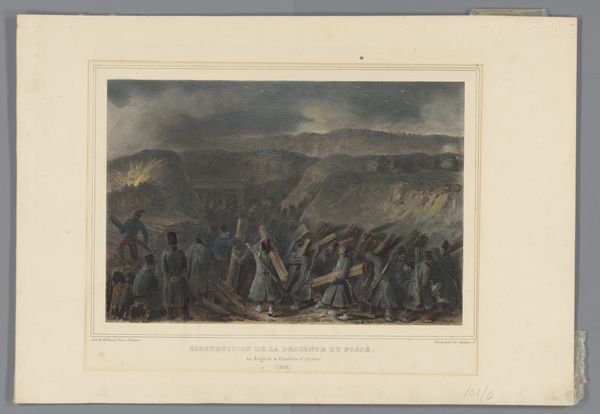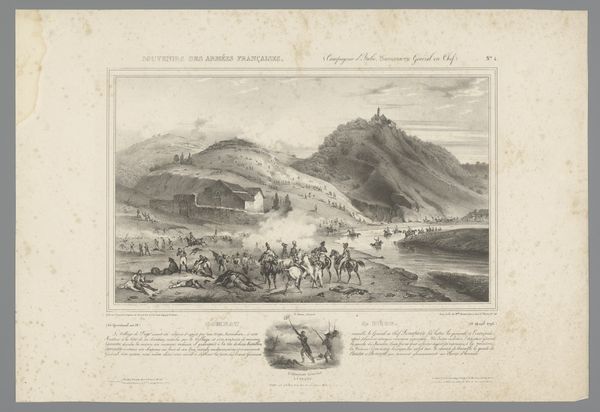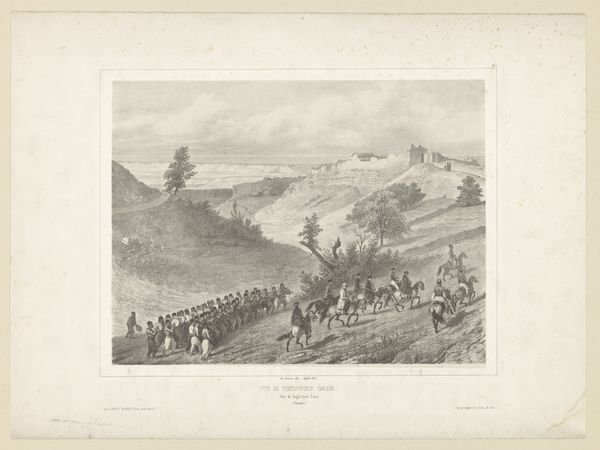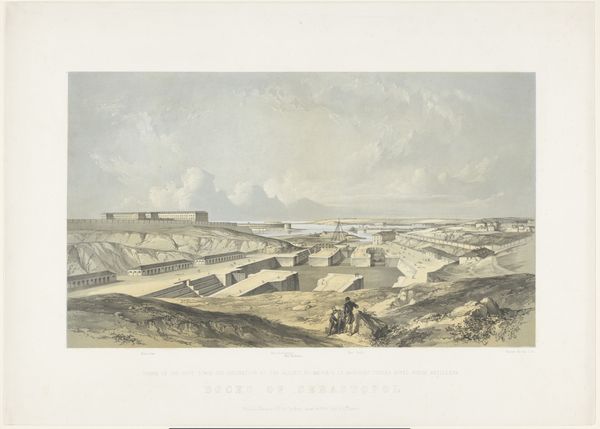
Buitenzijde van het ingegraven veldhospitaal van de Citadel van Antwerpen, 1832 1833
0:00
0:00
augusteraffet
Rijksmuseum
drawing, watercolor
#
drawing
#
landscape
#
watercolor
#
coloured pencil
#
romanticism
#
watercolour illustration
#
history-painting
Dimensions: height 310 mm, width 450 mm
Copyright: Rijks Museum: Open Domain
Curator: Here we have Auguste Raffet's "Outside the buried field hospital of the Citadel of Antwerp, 1832," a drawing with watercolor created in 1833. What are your first thoughts? Editor: It's immediately somber. The pale, almost washed-out colors lend it a feeling of bleakness. It’s a muted scene, yet the scale is remarkable, isn't it? A huge encampment almost swallowed by the earth. Curator: Precisely! Raffet employs a limited palette, focusing on earthen tones and grays to emphasize the harshness of the environment. Observe how the vertical lines of the wooden reinforcements contrast with the soft, billowing smoke. Editor: That contrast certainly amplifies the feeling of instability and impermanence. And look at those lines of soldiers, almost blending into the background. They're present, yet their individuality is subsumed by the landscape, their presence a stark reminder of the human cost of conflict. This work prompts a discourse around trauma, power structures, and the marginalization of vulnerable bodies during war. Curator: An insightful reading. Structurally, the composition leads the eye from the sharp detail of the soldiers on the left towards the obscured horizon. This progression highlights a formal dichotomy, between the known immediate suffering and the vague uncertainty of what’s to come. Editor: Exactly. The piece isn't just about representing a historical moment. Raffet subtly critiques the glorification of warfare. By emphasizing the raw realities of the hospital and the faceless soldiers, it subtly critiques warfare. Curator: And this brings forward its Romantic qualities – a feeling of sublimity in the face of hardship, yet with a careful rendering of observed details, holding on the very line between objective reporting and dramatic staging. Editor: Yes. It reminds us of the importance of confronting painful histories, sparking a conversation about the ethics of conflict and the human stories often omitted from official narratives. Curator: A sobering piece that marries the detached observation with the deep emotional undertones. Editor: Absolutely, making us confront the discomfort of war stripped bare.
Comments
No comments
Be the first to comment and join the conversation on the ultimate creative platform.
